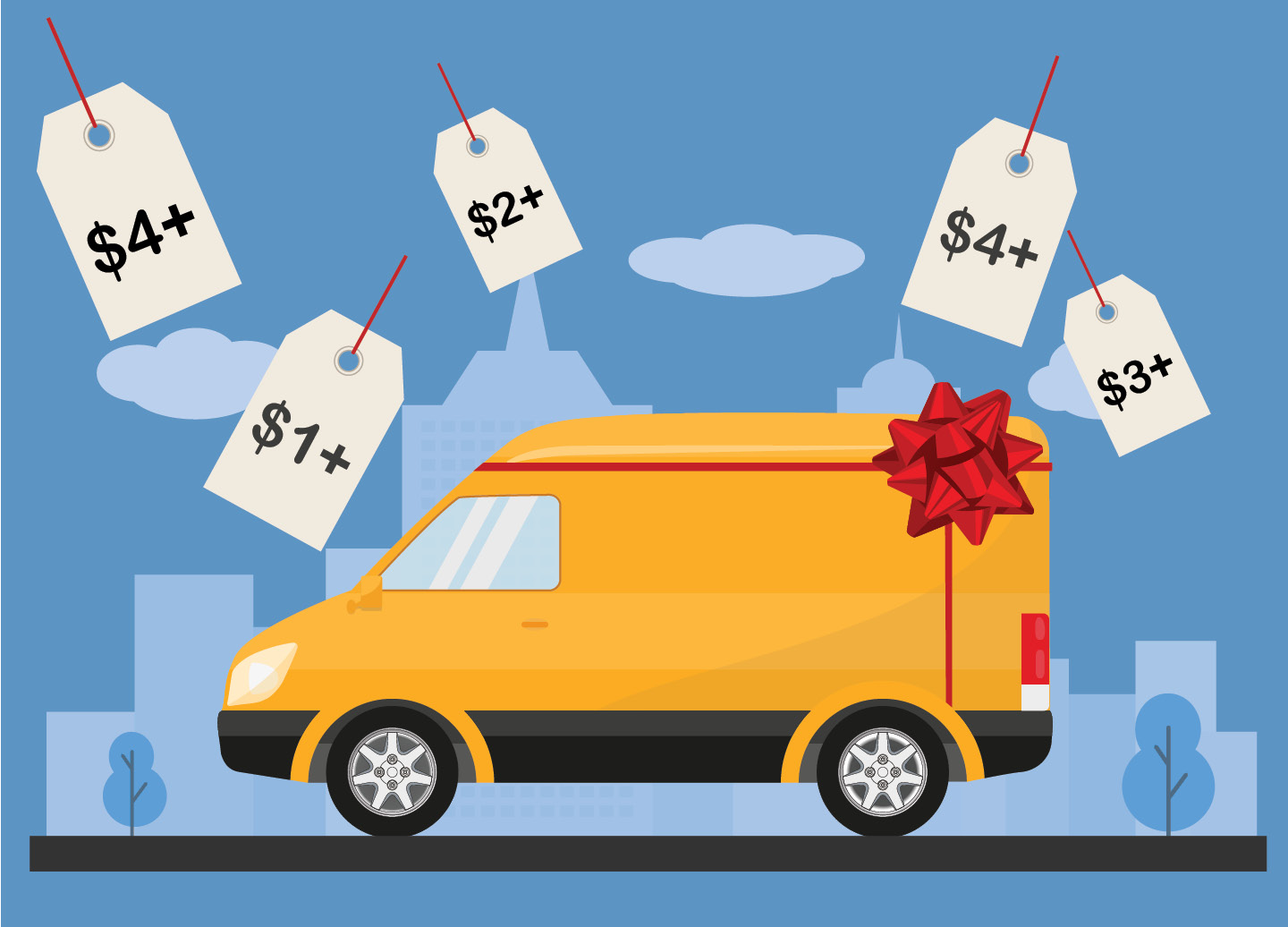How will 2020 peak season surcharges affect your parcel shipping strategy?
Peak season 2020 is almost upon us, and it’s predicted to be historic. On top of already rising e-commerce sales, the current pandemic has caused a giant digital shift to online shopping for those who traditionally shopped in-store. According to DigitalCommerce 360, because of the pandemic, U.S. package volume has jumped about 20% for UPS and FedEx. It surged 50% for the Postal Service in the quarter ending in June compared with the same period a year earlier. With higher-than-average e-commerce sales, comes higher-than-average parcel volume surges, causing panic amongst carriers and shippers alike.
To offset some of this volume, the major carriers have announced their 2020 peak season surcharges. While this is an annual occurrence for FedEx and UPS, this is the first time the United States Postal Service will join in.
[On-Demand Webinar: ProShip & Manhattan Associates Divulge Peak Season Planning Secrets]
FedEx Surcharges
Due to pandemic-influenced volume spikes, FedEx currently has implemented surcharges for applicable home delivery and SmartPost shipments until November 1st. The day after, FedEx will apply peak surcharges as FedEx workers will be handling a new volume spike as peak season holiday shopping starts up.
To “continue providing our customers with the best possible service during this challenging time,” FedEx’s website states that peak season surcharges and fees for certain home deliveries (effective November 2nd to January 17, 2021) and packages handed off to USPS (effective November 2nd to November 29th) will be enacted.
Though, to be charged home delivery surcharges, a shipper must reach a certain volume threshold. For instance, a customer shipping 35,000+ packages on average per week during October and November will see charges later in the year, and the amount charged depends on their volume recorded in February and March. FedEx states that customers who qualify will be notified prior to the effective date and could see charges of $1-$5 per-package depending on how much more the customer is shipping.
FedEx SmartPost, the home delivery service in which FedEx hands off shipments to the Postal Service for the final stretch, will see a $1 per package surcharge from Nov. 2 to Nov. 29. That surcharge increases to $2 per package from Nov. 30 to Dec. 6, and back down to $1 per package from Dec. 7 to Jan. 17, 2021.
It’s important to note that FedEx has not applied a residential holiday surcharge for three years prior to 2020, with oversized and hard-to-handle shipments being the exception (the surcharge for these runs from October 5th to January 17th, 2021).
[Learn more from the FedEx website]
UPS Surcharges
Much like FedEx, UPS will also enact peak surcharges on high-volume residential shippers but is going about it a bit differently. The company announced that surcharges of varying amounts will apply to customers shipping more than 25,000 parcels per week beginning November 15th and will stretch through the end of February 2021. The surcharge amounts will depend on the amount they shipped in February 2020, the last month before the pandemic hit. Here are some details:
Customer’s peak volumes exceed 110% of its average weekly volume
- $1 per package surcharge on all ground deliveries during peak period
- $2 per package levy on all residential air deliveries
- $1 per package levy for SurePost service (where UPS passes on to the USPS network for last-mile residential deliveries)
Customer’s peak volumes exceeding 200%-300%
- $3 per package surcharges on all residential air deliveries
- $2 per package levies on ground residential and SurePost
Customer’s peak volumes surpassing 300%
- $4 per package surcharges on residential air
- $3 per package charge on ground residential and SurePost
There will also be the traditional peak surcharges applied to oversized and hard-to-handle packages, but other than that (and much like FedEx), these surcharges are much different than the ones placed in 2019, where there were no surcharges on parcels not requiring special handling.
For additional information, read the UPS announcement.
And for the first time… USPS Surcharges!
USPS will temporarily raise prices on commercial parcels from Oct. 18-Dec. 27, making this the first time the United States Postal Service will implement peak season surcharges. The release states, “the planned temporary price adjustments are in response to increased expenses and heightened demand for online shopping package volume due to the coronavirus pandemic and expected holiday ecommerce.” [What the potential dismantling of USPS could mean for parcel shippers…]
The planned increases range from 24 cents to $1.50 and aim to keep USPS competitive during the busy holiday season. These new surcharges are causing concern amongst the small parcel world, and rightfully so as many low-cost delivery services rely on USPS (as we see above in both FedEx SmartPost and UPS SurePost surcharges). This is causing many to believe that free shipping will definitely take a hit, because nine times out of ten, the post office completes final mile deliveries since the lowest cost service is always postal last mile. In fact, USPS handled 34% of package deliveries during last year’s holiday shopping season, the most of any carrier, according to SJ Consulting Inc. UPS was second with 32% while FedEx came in at 19%.
Learn more via USPS news release.
You have options
With resources stretched thin and e-commerce levels expecting to skyrocket during the holidays, the big three carriers are making moves to ensure a successful and profitable peak season but leaving retailers, 3PLs and DTC manufacturers scrambling for lower-cost delivery options. Without a doubt, these surcharges will produce huge impacts on slim margins, making this peak season more important than ever. On top of that, pandemic-related surcharges are expected to resume after peak surcharges if the coronavirus issue is still unresolved.
So what can you do? Our experts recommend taking a look at regional carriers. This year, carrier capacity maximums have either shrunk or fees are based on and compared to normal shipping periods, meaning shippers are needing to find alternatives to the major carriers that will still meet their customer commitment times. Regional carriers offer great service replacements in this scenario offering, in some cases, a less-costly service with a shorter time-in-transit to the end-user in a region. However, it should be noted, some regional carriers have implemented peak surcharges as well.
By having a good mix of regional carriers and major carriers, you can put workarounds in place and balance the volume across your carrier mix. By doing this and implementing the right parcel shipping execution software, you can take into account any disruptions and all current surcharges, including pandemic and peak season surcharges, every time you produce a carrier label.
Don’t fumble peak season shipping this year by over exceeding carrier volume thresholds and missing customers delivery dates. Fees will pile up and customers will look elsewhere, which will dictate how the start of 2021 goes. Our shipping solutions experts are standing by and can help you understand what carrier mix is right for your business. Feel free to reach out.
You might also like...

 Back to Blog
Back to Blog






